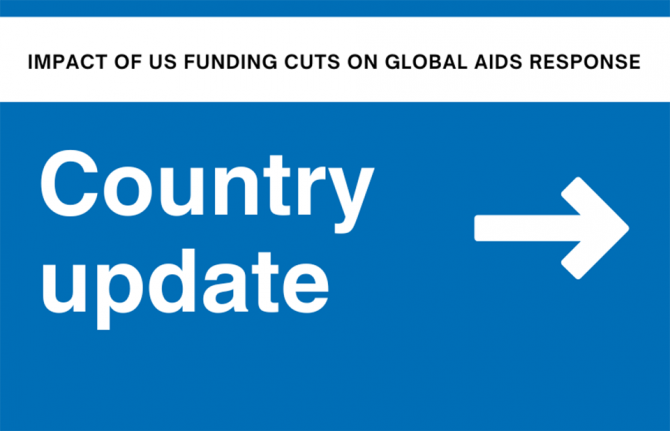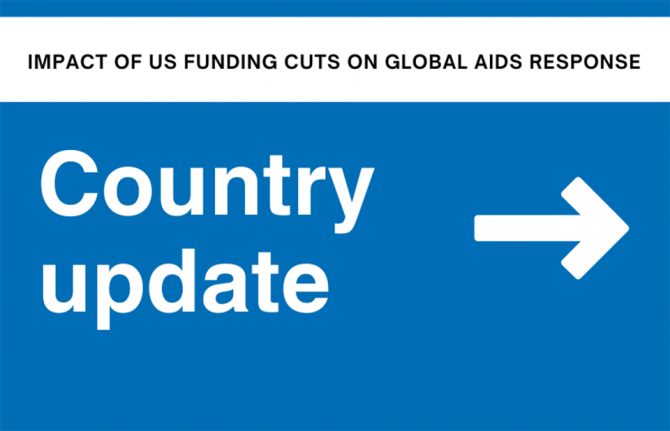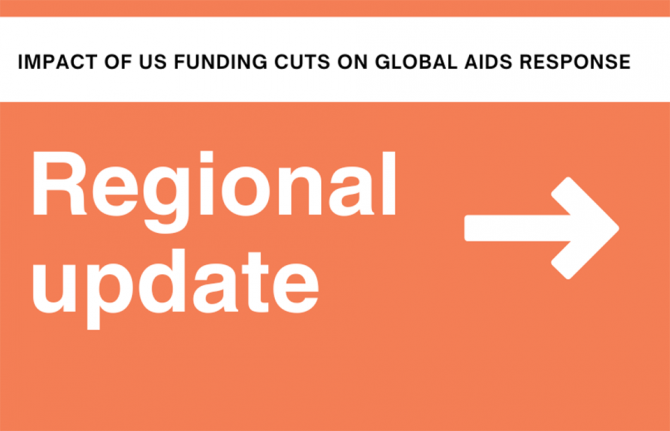
Feature Story
Global AIDS community explores vital need for the next generation of National Strategic Plans for AIDS
21 June 2012
21 June 2012 21 June 2012
The process of developing realistic and adaptable NSPs needs to keep pace with an evolving epidemic and a changing environment.
Credit: UNAIDS
A high quality, rigorous and robust National AIDS Strategic Plan (NSP) that focuses attention on achieving results—including stopping HIV transmission and extending the quality of life of people with HIV—is critical to the success of every national HIV response. The process of developing realistic and adaptable NSPs needs to keep pace with an evolving epidemic and a changing environment.
In Nairobi this week, the World Bank in collaboration with UNAIDS, WHO, UNDP and the Global Fund brought together representatives of National authorities, civil society organisations including people living with HIV and development partners to build consensus on the role and nature of the next generation of National Strategic Plans (so called NSP-3G).
Opening the meeting, the Kenyan Minister of State for Special Programmes, Honourable Esther Murugui, stressed the importance of reviewing National Strategic Plans as a critical means for refining the AIDS response. “As a Government, we recognize the need to develop and adopt systems and structures that match the complexities of the HIV epidemic,” said Minister Murugui. “We have reached a point where we have to change the way we have always done things to a way that focuses on results,” she added.
With a new landscape requiring innovative thinking and approaches, participants explored how new guidance, based on experiences in strategic planning thus far, can support countries in producing simpler, sharper, more effective NSPs that focus on results.
The Representative of the Office of the U.S. Global AIDS Coordinator for PEPFAR, Dr Mamadi Yilla said that “PEPFAR’s hope is that science and evidence drives the approach we take to strategic planning. That the Global AIDS community, that has witnessed constraints to HIV financing commitments, now ensures smarter investments are made.”
We have reached a point where we have to change the way we have always done things to a way that focuses on results
Kenyan Minister of State for Special Programmes, Esther Murugui
Speaking on behalf of the UNAIDS Executive Director, Dr Mbulawa Mugabe pointed out that the Strategic Plans should provide clarity on how to achieve results in line with the 2011 Political Declaration on AIDS goals and commitments. “In the coming years we need to be able to say that progress by 2015 and beyond was underpinned by the NSP-3G,” said Dr Mugabe. “The NSP-3G is the engine that will help countries focus, scale up and reach the 2011 Political Declaration on AIDS targets as well as the commitments made towards the elimination of new HIV infections among children,” he added.
Several key components of NSP-3G emerged during the meeting. This included a move towards a more flexible, adaptive approach to plans that could see HIV programmes integrated into wider health and development strategies. Such a move links closely with the way forward charted at the Fourth High Level Forum on Aid Effectiveness in Busan, Korea in 2011. “We recognise the importance of aligning NSPs more closely to national development planning process; NSPs need to consider decentralisation issues and they should not sit outside of national mechanisms,” explained Mr Daniel Marguari, Director of the Spirita Foundation—an organisation working to improve the quality of life of people living with HIV and their families in Indonesia. “At the same time, we do not want to loose the uniqueness, inclusiveness, partnership and multisectorality of the HIV response, especially when it comes to addressing the needs of key affected populations and communities.”
Participants discussed in detail how real and sustainable country ownership of an effective, multi-sectoral response, with nationally driven strategic plans, can be better achieved. Many national responses in low-and middle-income countries need strengthening. They are often influenced by external development agendas and are still largely funded by international donors. For example in sub-Saharan Africa two-thirds of AIDS expenditures come from external sources.
In order to sustain the HIV response, countries need to make better use of evidence to guide where to invest precious financial and human resources to achieve the HIV targets. Participants explored how countries could mobilize additional funding to meet the financing gap, while increasing efficiencies in the face of declining resources. The UNAIDS Investment Framework was described as a radical and innovative way of looking at resource allocation and closing the funding gap. It sets out to match need with investment, streamlines current strategies to avoid duplication and promotes cost-effectiveness. It supports countries to focus on investment choices that produce results for people.
“Now that our understanding of the HIV epidemic is more scientific and evidence-based, we find ourselves at a stage where we could determine what the exact sets of interventions need to be in a given response to control the epidemic,” Mr Aeneas Chuma, the UN Resident and Humanitarian Coordinator for Kenya said. “This means we need to ask if our investment is directed to the right interventions to achieve the right results.’’
The main outcome of the meeting was the development of ten consensus points on NSP-3G. A support and review group has been established to develop, finalize and disseminate new guidance to countries by October 2012. ‘‘I take note that the current national strategic plan for Kenya comes to an end next year,” said Minister Murugui. “Kenya hereby pledges to lead the world by being the first country to develop a third generation National Strategic Plan that will be based on the guidance that will come out of this important meeting.”



